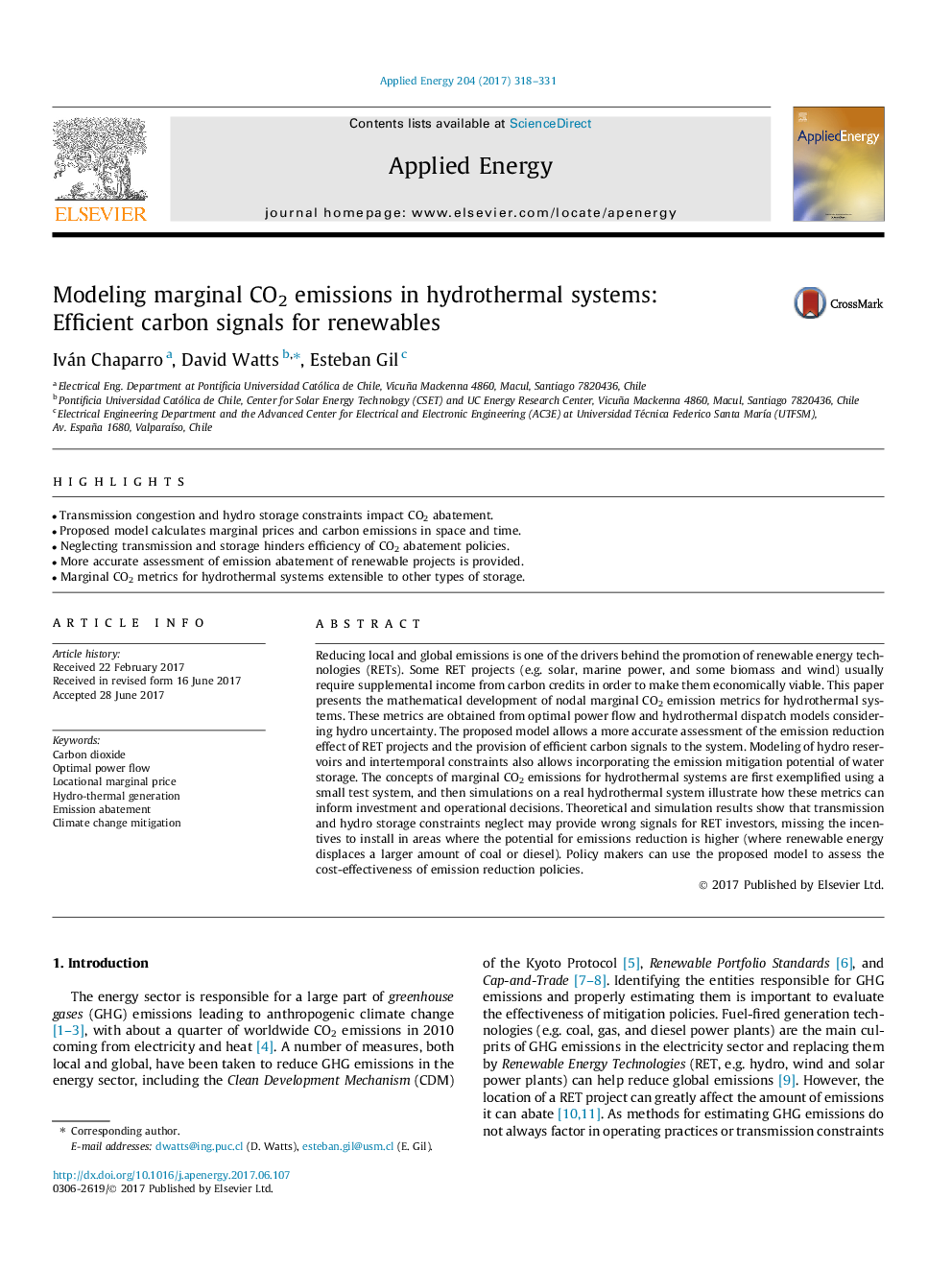| Article ID | Journal | Published Year | Pages | File Type |
|---|---|---|---|---|
| 4916055 | Applied Energy | 2017 | 14 Pages |
Abstract
Reducing local and global emissions is one of the drivers behind the promotion of renewable energy technologies (RETs). Some RET projects (e.g. solar, marine power, and some biomass and wind) usually require supplemental income from carbon credits in order to make them economically viable. This paper presents the mathematical development of nodal marginal CO2 emission metrics for hydrothermal systems. These metrics are obtained from optimal power flow and hydrothermal dispatch models considering hydro uncertainty. The proposed model allows a more accurate assessment of the emission reduction effect of RET projects and the provision of efficient carbon signals to the system. Modeling of hydro reservoirs and intertemporal constraints also allows incorporating the emission mitigation potential of water storage. The concepts of marginal CO2 emissions for hydrothermal systems are first exemplified using a small test system, and then simulations on a real hydrothermal system illustrate how these metrics can inform investment and operational decisions. Theoretical and simulation results show that transmission and hydro storage constraints neglect may provide wrong signals for RET investors, missing the incentives to install in areas where the potential for emissions reduction is higher (where renewable energy displaces a larger amount of coal or diesel). Policy makers can use the proposed model to assess the cost-effectiveness of emission reduction policies.
Keywords
Related Topics
Physical Sciences and Engineering
Energy
Energy Engineering and Power Technology
Authors
Iván Chaparro, David Watts, Esteban Gil,
